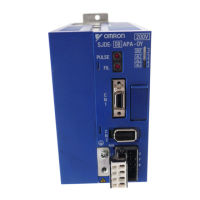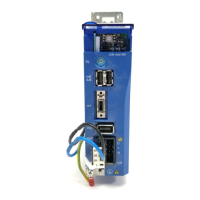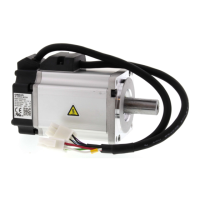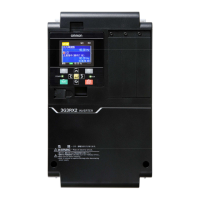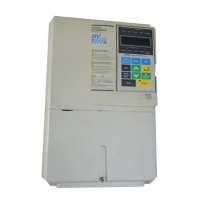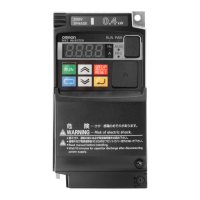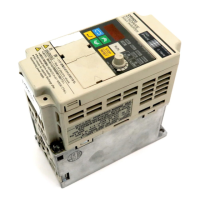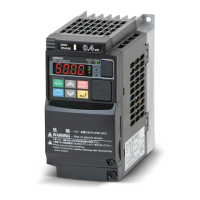RX Quick Start Guide 23
PROGRAMMING RX
3.10 V/F curve
The inverter generates the motor output according to the V/f algorithm selected
on parameter A044. The factory default is Constant torque (“00”). Review fol-
lowing description to help you choose the best torque control algorithm for
your application:.
•Constant and Variable (Reduced) Torque - Graph on the right shows the
constant torque characteristic from 0 Hz to the base frequency A003. The volt-
age remains constant for output frequencies higher than the base frequency.
•Variable torque - Graph on the right shows the variable (reduced) torque
curve, which has a constant torque characteristic from 0 Hz to 10% of the base
frequency. This helps to achieve higher torque at low speed with reduced torque
curve at higher speeds.
•Sensorless Vector Control - You can achieve high torque performance with-
out motor speed feedback but a good tuning of the motor is necessary to do it.
Please remember to perform auto-tuning for this control method. (A044=”3”)
•0-Hz sensorless vector control - Similar to sensorless but focus on a high
starting torque around 0-Hz point. Remember to use an inverter one frame big-
ger than the motor.
•Sensor vector control - Provides a full close vector control with an external
encoder achieving high torque and speed precision in all the speed range.
• Free V/F Control - The free V/F setting function allows you to set an arbitrary V/F characteristics by specifying seven voltage
and frequency points (b100~b113) on the V/F characteristic curve (A044=”2”)
This table shows the details about the Free V/F control
3.11 Torque boost function
Manual torque boost - Constant and Variable torque algorithms
feature and adjustable torque boost curve that could help during
the startup of load with very big inertia or friction. On those cases
it may be necessary to increase the low frequency starting torque
characteristic by boosting the voltage above the normal V/F ratio.
Basically it attempts to compensate for voltage drop in the motor
primary winding in the low speed range.
Be aware that running the motor at a low speed for a long time can
cause motor overheating and this happens more often when man-
ual torque boost is activated and motor doesn’t have force ventila-
tion.
Parameter Parameter Name Diagram Range
b100 Free V/F frequency 1 0 to b102 (Hz)
b101 Free V/F voltage 1 0.0 to 800.0 (V)
b102 Free V/F frequency 2 0 to b104 (Hz)
b103 Free V/F voltage 2 0.0 to 800.0 (V)
b104 Free V/F frequency 3 0 to b106 (Hz)
b105 Free V/F voltage 3 0.0 to 800.0 (V)
b106 Free V/F frequency 4 0 to b108 (Hz)
b107 Free V/F voltage 4 0.0 to 800.0 (V)
b108 Free V/F frequency 5 0 to b110 (Hz)
b109 Free V/F voltage 5 0.0 to 800.0 (V)
b110 Free V/F frequency 6 0 to b112 (Hz)
b111 Free V/F voltage 6 0.0 to 800.0 (V)
b112 Free V/F frequency 7 0 to 400.0 (Hz)
b113 Free V/F voltage 7 0.0 to 800.0 (V)
Hz
100%
0
V Constant torque
Hz
100%
0
V Variable torque
Max.
freq.
Base
freq.
Max.
freq.
Base
freq.
10% Base
freq.
A044=00
A044=01
Output voltage (V)
b113
b111
b109
b107
b101
b103,b105
0
b100 b102 b104 b106 b108 b110 b112
Output freq.(Hz)
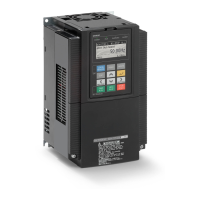
